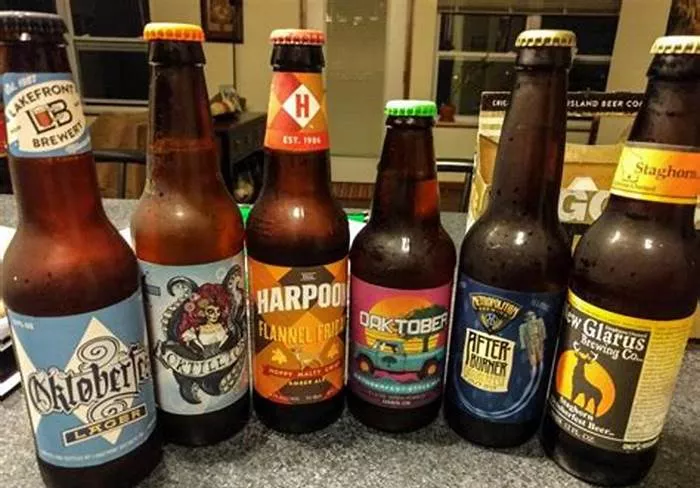SAN FRANCISCO — Long before the India Pale Ale took center stage in American craft beer culture, a homegrown style quietly carved out its place in brewing history: steam beer. Developed along the West Coast in the mid-19th century, this improvised lager—born of necessity and frontier conditions—survived against long odds thanks largely to a single brewery: San Francisco’s Anchor Brewing.
Steam beer was just one among several distinctive American styles of the pre-Prohibition era. Others, such as cream ale, brilliant ale, Pennsylvania swankey, and Kentucky common, flickered briefly before fading into obscurity—many falling victim to the devastating impact of Prohibition. Steam beer, however, endured, buoyed by Anchor Brewing’s dedication to the style even after World War II when it had become the last brewery producing it.
The rise of refrigeration in the early 20th century threatened to render steam beer obsolete, offering brewers a more consistent and controllable way to produce lagers. By the 1910s, steam beer had already become a rarity. Prohibition dealt another blow, wiping out nearly all the breweries that had made it. By the 1950s, only Anchor remained.
The brewery’s near-demise in 1965 is the stuff of legend. Fritz Maytag, heir to the Maytag appliance fortune, purchased a majority stake in Anchor just days before it was set to close. His investment not only saved the brewery but laid the groundwork for the modern American craft beer movement. Maytag became a mentor to a generation of aspiring brewers, many of whom visited Anchor in pursuit of their own brewing dreams.
In 1981, the federal government granted Anchor Brewing the trademark to the term “steam beer,” effectively cementing the style’s identity with the brand. As a result, other breweries producing similar beers were compelled to use the term “California common,” a nomenclature that never quite caught on with drinkers or brewers alike. Though others imitated it, Anchor Steam became synonymous with the style.
Steam beer is often thought of as a San Francisco original, but its roots extend across the West Coast, from Alaska to Oregon. It emerged after 1850, when German immigrants began introducing lager to the American brewing landscape. Lacking refrigeration, brewers improvised by fermenting with lager yeast at warmer ambient temperatures. From the 1850s to the 1870s, the beverage was known simply as “lager.” The term “steam” gained traction in the 1860s, becoming the common label by the 1880s.
Though theories vary about the origin of the name, the most credible explanation points to the beer’s high carbonation. Historical accounts suggest that the pressure inside barrels could reach as high as 70 psi, resulting in a brew as effervescent as Champagne. One 1871 German-language source describes how bartenders would blend flat and carbonated versions of the beer, with the bubbly version referred to specifically as steam beer.
Rather than a clearly defined style, steam beer was more a brewing method born out of constraint. It used lager yeast, required no cold storage, and was often kräusened to boost carbonation. Grain bills varied widely, as did mash techniques, with both German step-mashing and British infusion methods in use.
Anchor Brewing eventually became a revered institution in the American brewing world. Maytag expanded the brewery’s lineup to include celebrated releases such as Liberty Ale, Old Foghorn, and Christmas Ale. Yet none overshadowed the flagship: Anchor Steam.
Among craft brewers, there is general agreement that California common remains more of an homage to Anchor than a style with its own evolutionary diversity. “It’s a style that went through a very tight evolutionary bottleneck,” said Sam Tierney of Firestone Walker Brewing Company. “Basically nobody has been able to popularize any significant deviations from Anchor.”
Other brewers have made efforts. Atlas Brew Works in Washington, D.C., launched in 2013 with District Common, intended as a sessionable beer with a nod to its West Coast inspiration. Yet despite a dedicated internal following, the beer has struggled to gain broad appeal. At Iowa’s Toppling Goliath, Dorothy’s New World Lager began as a tribute to Maytag’s Iowa roots but has since evolved into a more conventional lager.
João Alameida, once a taproom manager at Anchor and now production manager at Almanac Beer Co., continues to carry the steam beer torch. Almanac plans to brew a California common in 2025, using traditional components like caramel and two-row malt, and Northern Brewer hops—a staple of Anchor’s formulation. Though modern constraints will necessitate some updates, the intent remains to preserve the beer’s defining elements: rich caramel notes, creamy foam, pronounced carbonation, and subtle esters.
Much about steam beer has changed since its 19th-century beginnings. Early versions used six-row malt and long-forgotten hop varieties. Today’s interpretation—particularly the one shaped by Anchor—has become the singular example that defines the category.
Though Anchor Brewing officially closed its doors in 2023, it was once again rescued, this time by Hamdi Ulukaya, founder of Chobani. The brand’s future remains uncertain, but if it returns, Anchor Steam will likely reclaim its place not just as a beer, but as the definitive expression of an American original.
In the end, the legacy of steam beer lives on not through a broad style but through one enduring name. Like Guinness with Irish stout, Anchor Steam is no longer just a brand—it is the benchmark by which all others are measured.
You Might Be Interested In:


